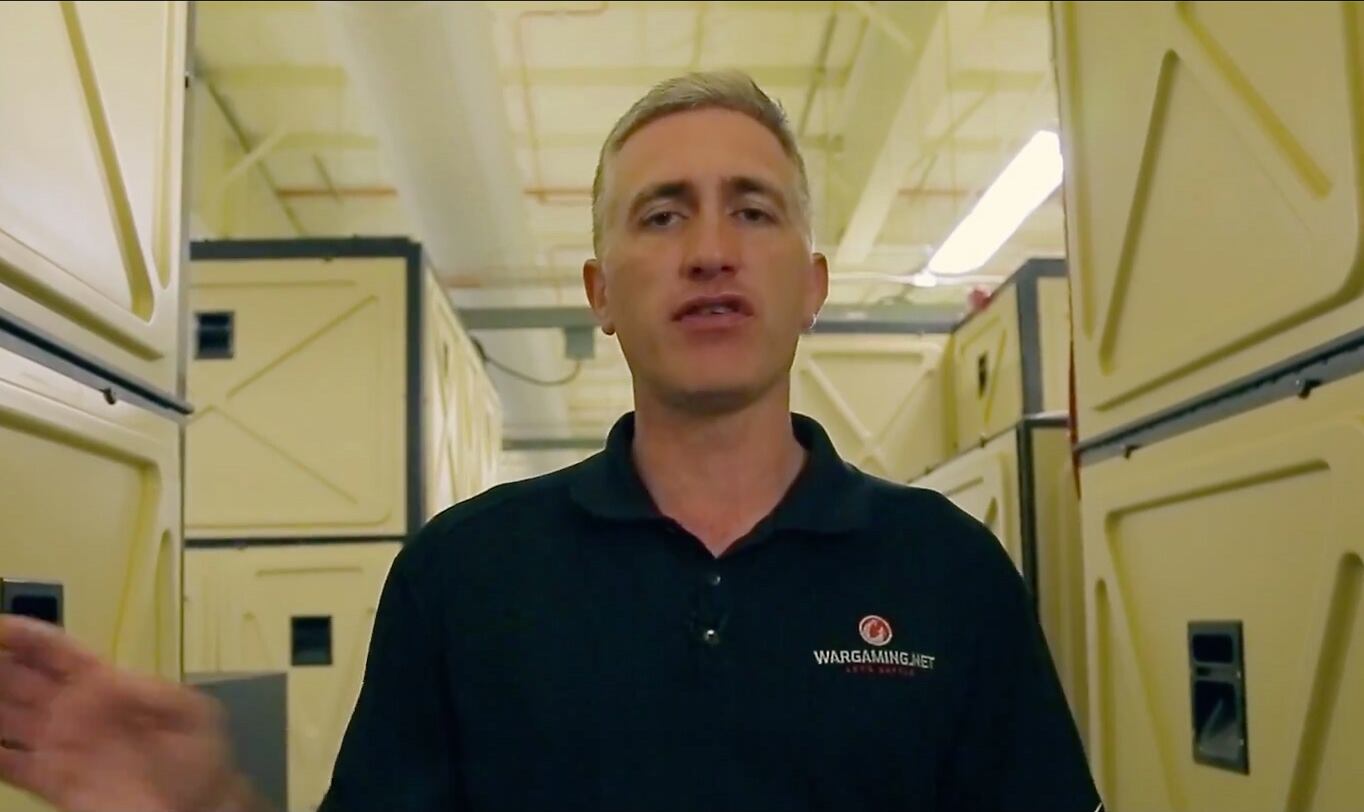But slowly, like a tank trying to break free of a thick patch of mud, things may be turning around.
With Brad Pitt's latest blockbuster "Fury" fueling the popularity of heavy metal behemoths in general, gaming franchises such as World of Tanks have never been more popular.
Despite more than a decade of constant combat in the real world, though, you could forgive the average American for wondering if the U.S. military even has any tank units anymore.
Hell, says Nicholas Moran, you could forgive the average tanker for wondering the same thing.
He's seen firsthand the rise of tanks in the gaming world and the struggles of tanks in the real world.
A cavalry officer in the Nevada Army National Guard with two combat tours to his credit, as well as a veteran of the Irish military, Moran is also chief of militaria relations for the San Francisco-based free online gaming franchise World of Tanks.
When Moran was going through the armor officer's captain course a few years ago, the instructor asked the group of 60 students who would soon command heavy units across the Army how many actually had fired a tank "Table 8," the basic live-fire gunnery qualification for M1 Abrams crews.
Moran was among only about a third of the class who raised their hands.
The instructor then asked how many had done a Table 8 for Bradley crews.
This time, Moran was among only about a quarter of the class who had qualified on the heavily armored infantry fighting vehicle.
"And how many of you have fired both?" the instructor asked.
"And this one single National Guardsman — that is, me — raises his hand," Moran says.
The instructor was making a harsh, if necessary, point, right where the rubber — or track tread — meets the road.
"He was demonstrating how far away we had gotten from our core competencies. We've been so focused on the Iraq War and the insurgency in Afghanistan that the ability to tank had started to vanish from the U.S. Army. It's been a sad state of affairs for the armor branch."
Indeed, while Moran's tank platoon was among the last to deploy into Iraq with its actual tanks in 2004, like most units since then, his mechanized unit traded its Bradleys for Humvees and MRAPs when it deployed to Afghanistan in 2009.
By then, even the Army's National Training Center in the high desert of California — once the ultimate bastion of heavy armor unit training rotations — had all but given up on tanks, transitioning the vast majority of its focus to infantry skills needed to fight counter-insurgencies.
"In the old days, rotations at NTC were force-on-force, high-intensity conflict — a regiment of [enemy armored vehicles] coming against a U.S. tank battalion," he says. By the end of 2004, however, all that had ended.
But more recently, tanks are finding new emphasis at NTC as leaders there reintroduce the idea of training for the full spectrum of combat.
"The new model is the hybrid threat or — as some call it — the three-block war. The first part of the exercise is back to a conventional — 'We are tanks, we're going to blast the living crap out of you' — focus," says Moran. "It's heavy forces against BMPs and enemy tanks. Then it converts to a counterinsurgency and stability operations scenario."
Before that could happen, Moran laments, "the guys at NTC had to write to the Armor School to see if they happened to have any manuals in the library that explained conventional war-fighting techniques. Even the National Training Center had lost them.
"Fortunately, we're fixing it again, but it's a good example of how far badly it went."
The Army's Sullivan Cup is part of that resurgence, he says. Introduced in 2012, the "best tank crew" competition puts renewed focus on the basics of what it means to be a tanker.
Held every other year, the cup gathers the best 14 crews across the Army, Marine Corps and Canadian Army for a four-day shoot-out.
"The Sullivan Cup provides a realistic and challenging tank crew competition that will build esprit de corps within our Armor Force and returns the pride of Mobile Protected Firepower gunnery to its rightful place in the mounted force's mindset," wrote Brig. Gen. Lee Quintas, the Army's Chief of Armor, in a note to the tanker community announcing last year's games.
Yes, tanks are getting out of the mud, says Moran, but slowly. Even after covering the Sullivan Cup for a new video series produced by Wargaming — see his Day 2 coverage on this page; or start with Day 1 and watch all the way through to Day 3 — Moran says there's still plenty of ground to cover.
"I don't think we are where we should be or where we want to be yet, but we are now starting to remember some of the basics."





